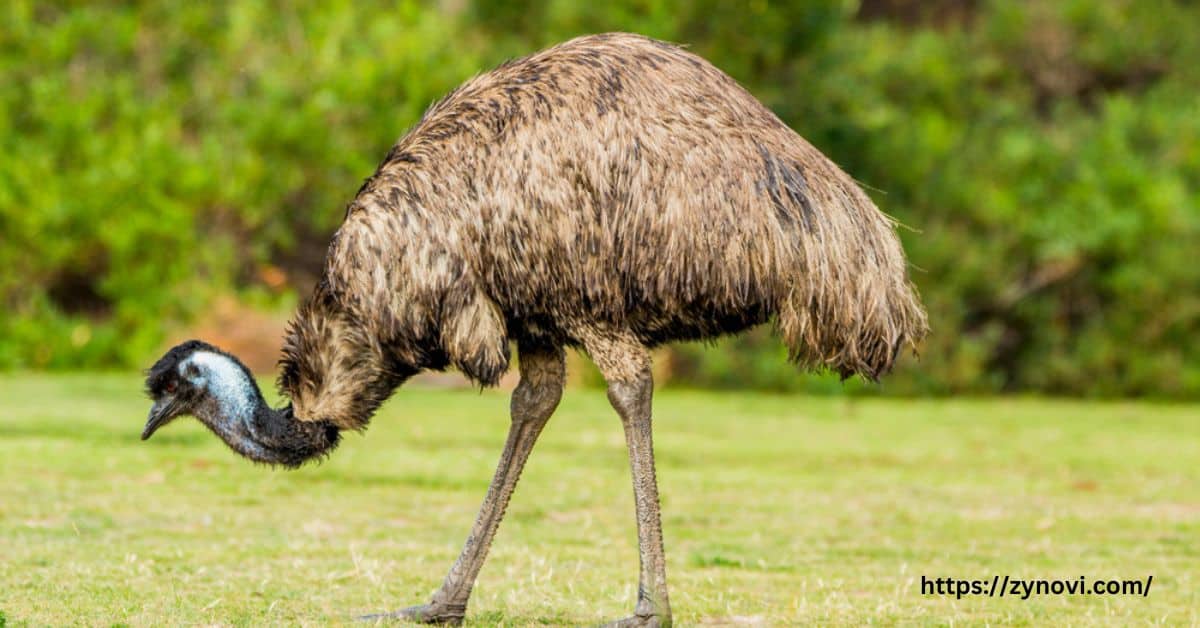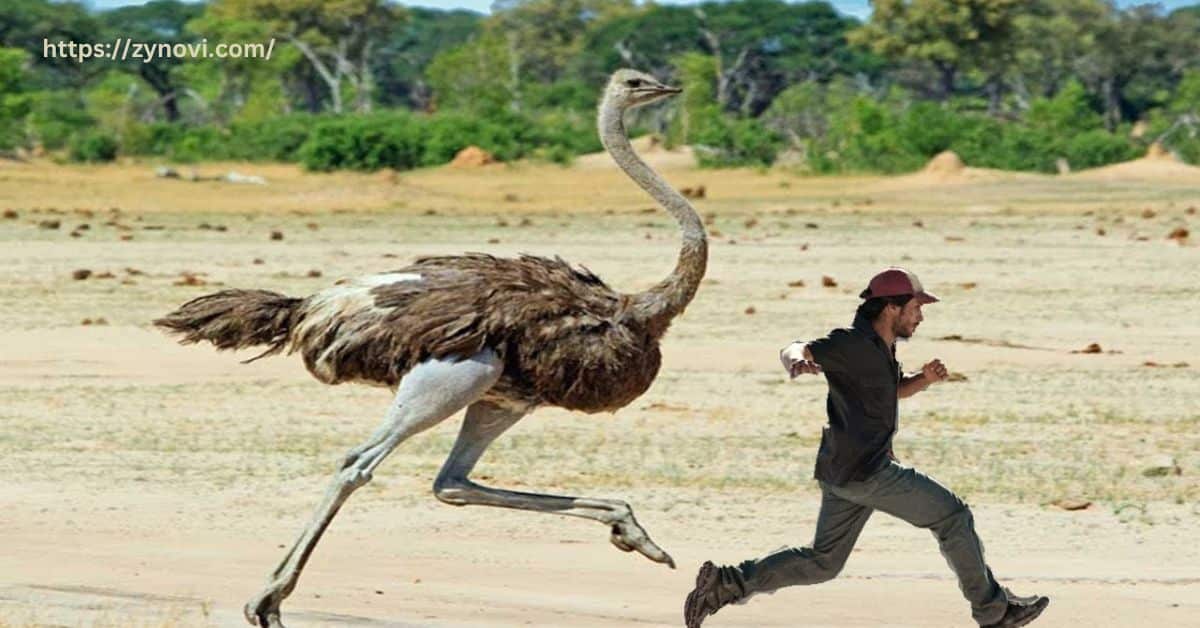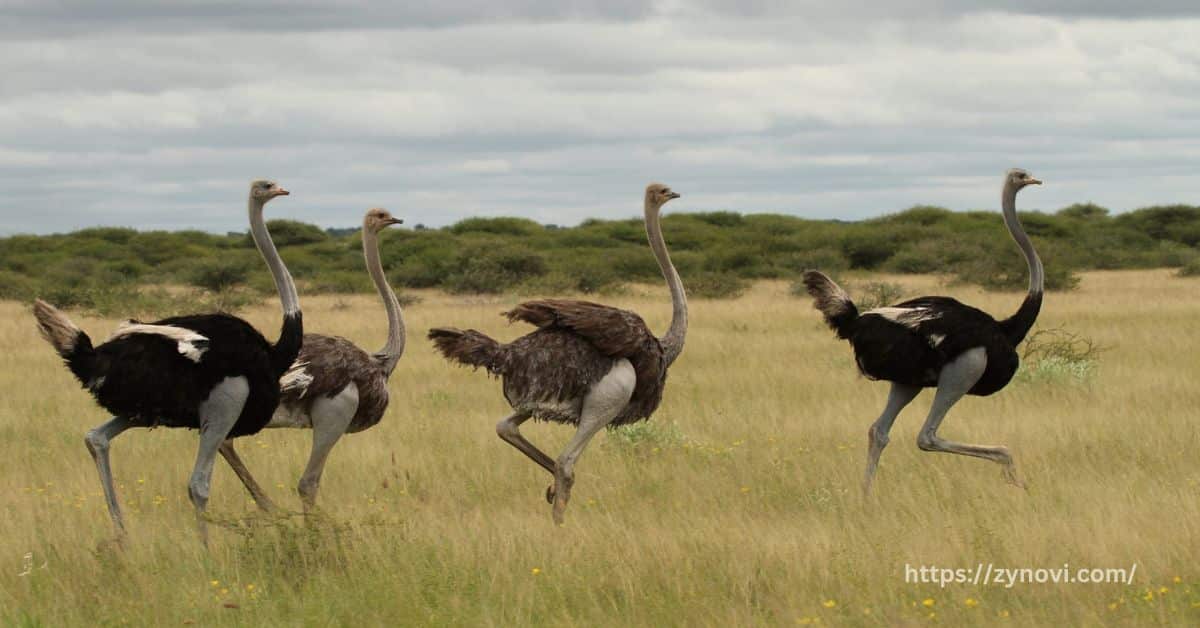Do ostriches attack humans? Ostriches can attack humans if they feel threatened, particularly when guarding their territory or young.
It’s a question that might sound a bit strange, but if you’ve ever wondered about these towering birds, you’re not alone! Ostriches, known for their impressive speed and size, can be intimidating creatures, especially if you find yourself up close. But just how dangerous are they really?
In this article, we’re diving into the fascinating world of ostriches, exploring their behavior and what triggers an attack. Whether you’re planning a trip to the safari or simply curious about wildlife, you’ll want to stick around for the surprising facts and insights we’ve uncovered!
What Is an Ostrich?
Ostriches (Struthio camelus) are the largest living birds in the world. Native to sub-Saharan Africa, these unique creatures are a blend of elegance and power. Let’s take a closer look at what makes them so extraordinary.
Physical Characteristics
- Size and Weight: Ostriches can grow up to 9 feet tall and weigh between 220-350 pounds. Males are generally larger than females.
- Powerful Legs: Their legs are not only built for speed but are also deadly weapons. Ostriches can deliver a kick strong enough to kill a predator or severely injure a human.
- Sharp Claws: Each foot features a sharp claw that can slash through flesh with ease.
- Eyesight: With some of the largest eyes in the animal kingdom, ostriches have exceptional vision, allowing them to spot threats from over 1.5 miles away.
Habitat and Distribution
Ostriches thrive in a wide range of environments, showcasing their adaptability to various habitats such as savannas, deserts, and open woodlands.
These impressive birds are native to sub-Saharan Africa, where they roam freely in the wild. However, ostriches have also become a global presence, being raised in zoos and ostrich farms worldwide.
Their ability to withstand different climates has made them a significant asset in the farming industry, particularly valued for their lean meat, durable leather, and decorative feathers, which are used in various industries.
Understanding Ostrich Behavior

To understand if and why ostriches attack humans, it’s essential to delve into their behavior. Ostriches are generally shy and skittish, but they can display aggression under certain conditions.
General Temperament
n the wild, ostriches prefer to flee rather than fight when faced with danger. However, their temperament can vary based on their surroundings:
In the wild: ostriches typically choose to flee rather than confront danger, relying on their speed to escape predators. They are naturally cautious and prefer to avoid human interaction whenever possible, maintaining their distance to stay safe.
In captivity: ostriches often display different behaviors as they become more familiar with human presence. They may develop territorial tendencies, particularly in confined spaces, leading to more assertive or aggressive interactions.
Breeding Season Aggression
During the breeding season, male ostriches display heightened aggression and become fiercely territorial to protect their mates and nests. This period generally occurs in spring and early summer, with several distinct signs of aggressive behavior:
- Feather fluffing: Males fluff their feathers dramatically to appear larger and more intimidating to rivals or perceived threats.
- Dancing: While primarily a courtship ritual to attract females, this elaborate movement can also signal aggression if interrupted or challenged.
- Loud vocalizations: Booming calls and hisses are used to establish dominance and warn others to stay away from their territory.
Why Do Ostriches Attack Humans?
Although rare, ostrich attacks can occur. The reasons usually stem from their natural instincts.
Territorial Instincts
Ostriches are fiercely protective of their territory, especially during the breeding season when their instinct to guard nests and mates is at its peak. Any intrusion into their space, whether intentional or accidental, is often perceived as a threat.
Approaching a nesting site or venturing too close to an ostrich can provoke defensive behavior. These large birds may respond with aggression to ensure the safety of their eggs or to assert dominance over perceived intruders.
Perceived Threats
Ostriches are hyper-aware of their surroundings. They may interpret sudden movements, loud noises, or even unfamiliar objects as threats. For example:
- Raising arms or appearing larger: When humans raise their arms or try to look bigger, ostriches may interpret this as a sign of aggression or an attempt to challenge them, triggering a defensive attack.
- Running toward an ostrich: Charging at an ostrich is often perceived as a direct threat or challenge, prompting the bird to react aggressively to protect itself.
How Dangerous Are Ostrich Attacks?

The danger level of an ostrich attack depends on various factors, including proximity and the ostrich’s level of aggression.
Potential for Injury
Ostriches possess several physical traits that make their attacks dangerous:
- Kicks: Ostriches have incredibly strong legs capable of delivering a kick with a force of up to 2,000 pounds per square inch. Such power can easily break bones, cause severe trauma, or even result in life-threatening internal injuries.
- Claws: Each foot is equipped with sharp claws that can inflict deep and painful gashes. These wounds can lead to significant blood loss and require immediate medical attention to prevent complications.
Fatality Risk
Although fatalities from ostrich attacks are uncommon, they are not impossible, especially if the attack targets vulnerable areas such as the head, neck, or chest.
Ostriches powerful kicks and sharp claws can inflict fatal injuries in seconds. Historical records reveal that most fatal encounters occur when humans ignore warning signs or provoke the bird.
Recognizing aggressive behaviors and maintaining a safe distance can significantly reduce the risk of such life-threatening incidents.
How to Stay Safe Around Ostriches
Preventing an ostrich attack is all about understanding their behavior and respecting their space. Here are some essential safety tips.
Avoiding Confrontation
- Maintain distance: It’s crucial to stay at least 50 feet away from wild ostriches to avoid provoking them. Keeping a safe distance minimizes the risk of triggering their defensive instincts.
- Recognize warning signs: Watch for behaviors such as feather fluffing, loud vocalizations, or aggressive posturing, as these indicate the ostrich feels threatened and may attack if approached further.
- Avoid sudden movements: Move slowly and deliberately, as sudden or jerky actions can alarm the ostrich and make it perceive you as a threat.
What to Do If Attacked
If you find yourself in the unfortunate position of facing an aggressive ostrich, follow these steps:
- Use barriers: If an ostrich attacks, quickly place a solid object such as a tree, large rock, or fence between you and the bird. This can block its approach and give you a moment to regroup.
- Protect vital areas: Crouch low to the ground and use your arms to shield your head, neck, and chest. Protecting these areas reduces the risk of severe injury from kicks or slashes.
- Do not run: Avoid running, as this can trigger the ostrich’s natural instinct to chase. Instead, back away slowly while maintaining a calm and non-threatening posture.
Ostrich Defensive Capabilities

Ostriches rely on both flight and fight responses to survive. Here’s how they defend themselves:
| Defense Mechanism | Details |
|---|---|
| Running | Ostriches can sprint at speeds of up to 45 mph in short bursts, allowing them to outrun predators quickly. |
| Kicking | Their strong legs can deliver powerful kicks with deadly force, capable of injuring or killing predators. |
| Vision | With exceptional eyesight, ostriches can spot threats from miles away, giving them time to react swiftly. |
The Ostrich Farming Industry
Ostriches aren’t just fascinating wildlife; they’re also a vital part of the farming industry. Ostrich farms produce:
- Meat: Ostrich meat is a popular low-fat, high-protein alternative to traditional red meats like beef and pork. It’s prized for its rich flavor and nutritional benefits.
- Feathers: Ostrich feathers are highly versatile, used in fashion for decorative purposes and in industrial settings for tasks like dusting delicate equipment.
- Leather: Ostrich leather is sought after for its durability, softness, and distinctive textured appearance, making it a luxury material in the fashion industry.
Major farming regions: The United States, South Africa, and Australia are prominent regions for ostrich farming, focusing on sustainable practices and global export.
FAQS
Is an ostrich dangerous to humans?
Ostriches can be dangerous if they feel threatened, using their powerful legs to kick or charge.
What to do if an ostrich attacks you?
If attacked, protect yourself by staying on your feet, keeping a safe distance, and using any available objects as shields.
Do ostriches bond with humans?
Ostriches are generally not known to bond with humans, as they are wild animals with limited social behavior toward people.
Can ostriches be friendly?
While not naturally friendly, some ostriches raised in captivity may tolerate human interaction, but they can still be unpredictable.
Conclusion: Do Ostriches Attack Humans?
In conclusion, Ostriches are generally shy and non-aggressive, but they can become dangerous when provoked or during the breeding season. By understanding their behavior and following safety guidelines, it’s possible to admire these magnificent creatures from a safe distance.
Ostriches serve as a reminder of nature’s balance awe-inspiring and powerful yet requiring respect. Share your experiences or learn more about these incredible birds to deepen your appreciation for them. Whether encountered in the wild, at a zoo, or on a farm, appreciating their instincts and space ensures a safer and more enriching experience for everyone.










